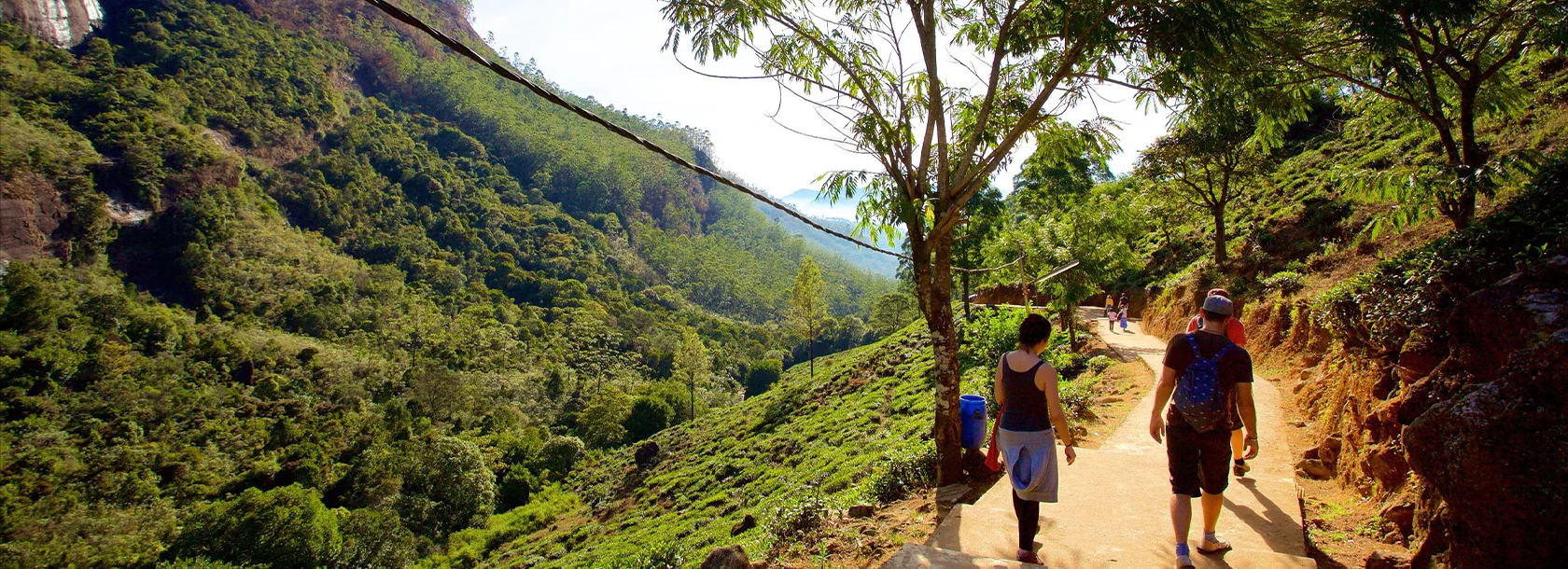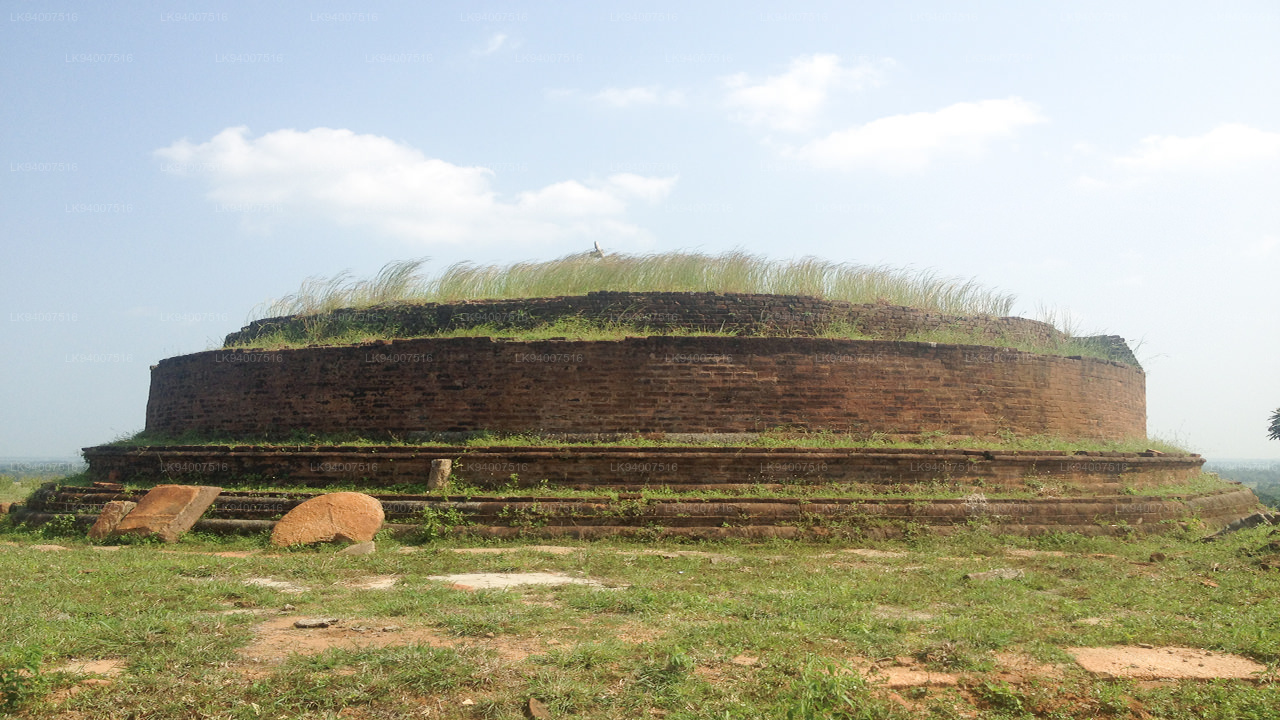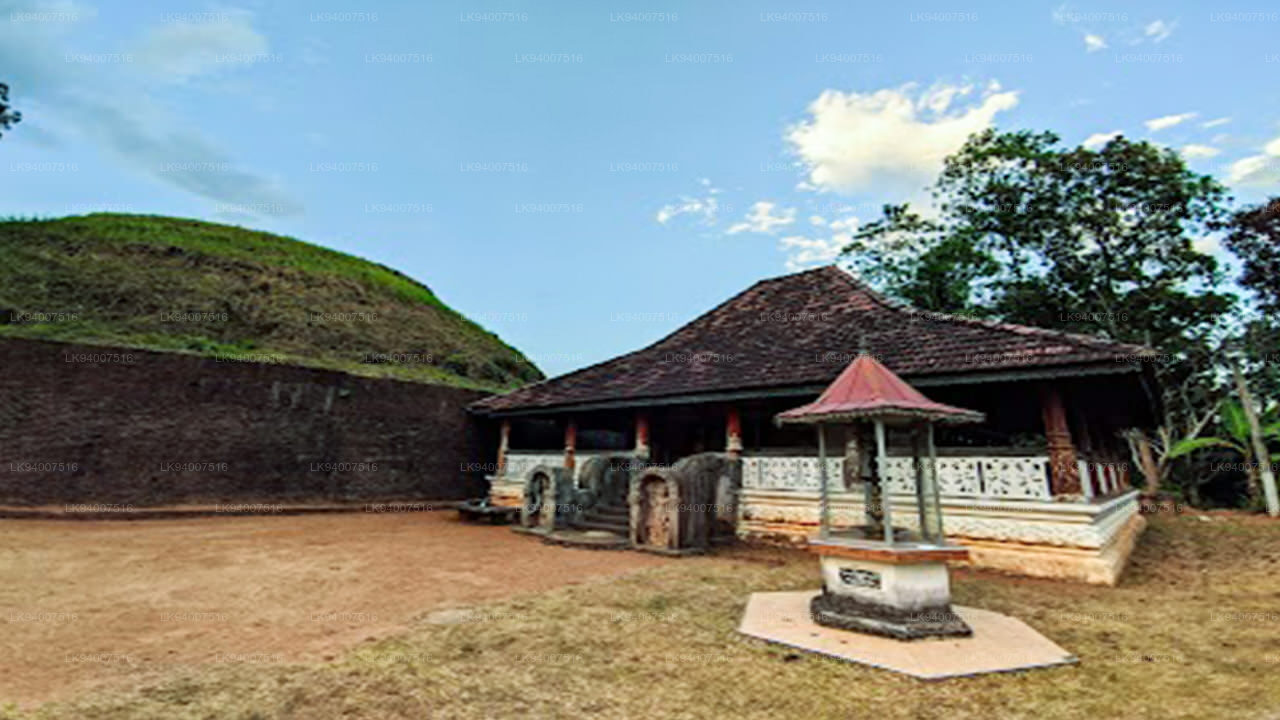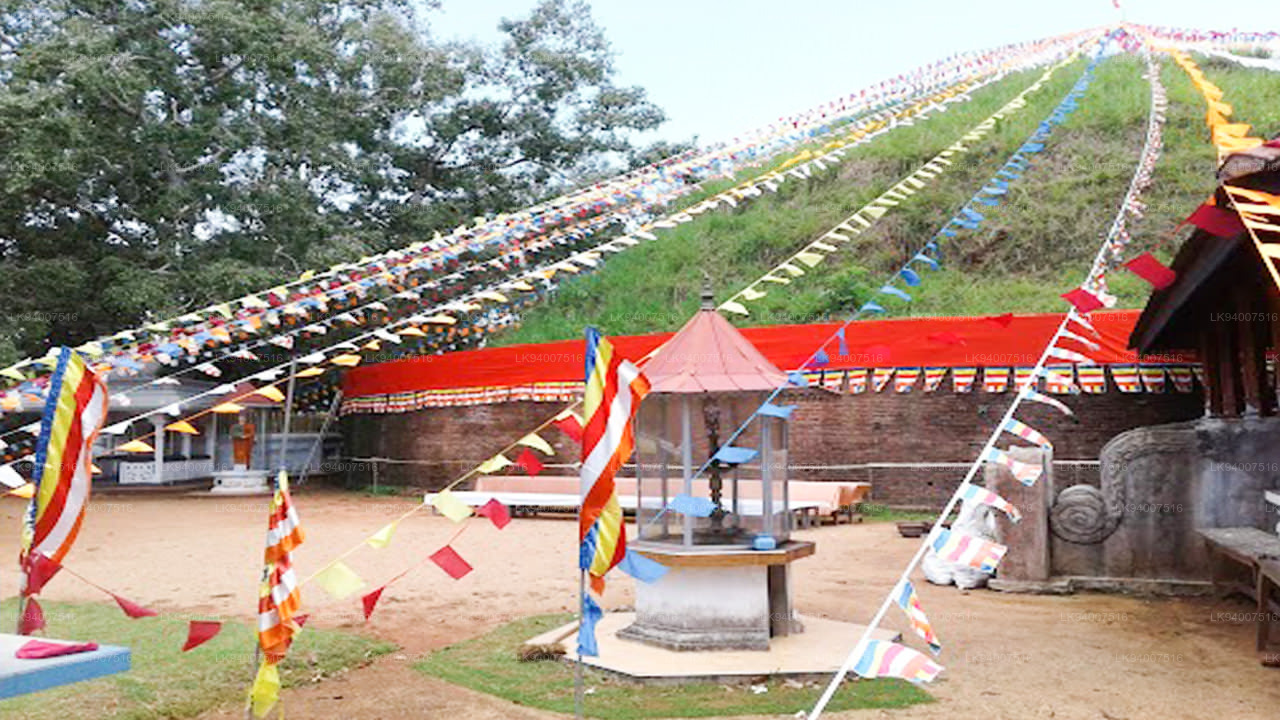
Kegalle City
Kegalle City is a scenic town in Sri Lanka, known for its rich natural beauty, rubber plantations, and cultural heritage. Located between Colombo and Kandy, it offers attractions like the Pinnawala Elephant Orphanage, picturesque waterfalls, and spice gardens. A perfect destination for nature lovers and cultural explorers.
Deliwala Kota Vehera



Deliwala Kota Vehera
Deliwala Kota Vehera wurde im 3. Jahrhundert v. Chr. von einem regionalen König namens Keerthi Tissa erbaut. Auf seine Bitte hin lud König Devanmpiyatissa (250-210 v. Chr.) Mihindu Maha Thero ein und er kam mit den Reliquien, die feierlich aufbewahrt wurden, zu diesem Tempel.
Geschichte
Dieser Stupa wurde mindestens im 1. Jahrhundert v. Chr. erbaut. Basierend auf dem Brami-Schriftzug auf den Ziegeln und der Größe der Ziegel gehen Archäologen davon aus, dass diese Ziegel aus der Zeit von König Dutugemunu (161–131 v. Chr.) stammen. Laut Mahavansa wurde dies jedoch zur Zeit von König Devanmpiyatissa (250-210 v. Chr.) erbaut.
Es gibt eine andere Annahme, dass dieser von König Parakramabahu (1153-1186) während seines Aufenthalts dort erbaut, aber Polonnaruwa überlassen wurde und den Stupa in einem unvollständigen Zustand zurückließ.
Archäologische Struktur
Im Jahr 1892 berichtete AC Bell, dass der Umfang des Stupa 640 Fuß und die Höhe 112 Fuß betrug. Obwohl Schatzsucher diesen Stupa übersehen haben, befand er sich zum Zeitpunkt seiner Entdeckung in einem sehr heruntergekommenen Zustand. Es wurde auch berichtet, dass diese mit einer dünnen Ziegelschicht als Hülle gebaut und im Inneren mit Erde gefüllt wurde. Dieser Stupa wurde durch die Formung eines kleinen natürlichen Hügels und den Bau einer Backsteinhülle über dem Hügel errichtet.
Bei Ausgrabungen im Jahr 1957 wurde in der Nähe des Pesa Walalu ein goldener Sarg von etwa 3 Zoll Höhe entdeckt. Dies war eine perfekte Nachbildung der Sanchi Stupa in Indien. In dieser Stupa gab es keine Reliquienkammer, aber zusätzlich zur goldenen Schatulle wurden in der Stupa 173 kleinere Schatullen und zwei Edelsteinschatullen entdeckt. Heute hat der Stupa einen Umfang von 160 m.
About Kegalle District
Kegalle District, located in the Sabaragamuwa Province of Sri Lanka, is known for its lush landscapes and historical significance. The district is home to scenic hills, rubber plantations, and paddy fields, contributing to its rich agricultural economy. Kegalle is also famous for the Pinnawala Elephant Orphanage, a popular tourist attraction that provides care for rescued elephants.
The district has a diverse cultural and historical heritage, with ancient temples, colonial-era architecture, and traditional industries such as spice cultivation and handicrafts. Kegalle town serves as the administrative and commercial hub, offering essential services and transport links to major cities like Colombo and Kandy.
Nature lovers can explore the region’s waterfalls, caves, and forests, making it an ideal destination for eco-tourism. The district’s close proximity to major highways enhances accessibility, attracting both tourists and investors to this picturesque part of Sri Lanka.
About Sabaragamuwa Province
Sabaragamuwa Province, situated in southwestern Sri Lanka, comprises the districts of Ratnapura and Kegalle. It is renowned for its rich natural resources, including tea, rubber, and precious gemstones. Ratnapura, the capital, is famously known as the "City of Gems," playing a central role in the country's gem trade. The province also features vast agricultural lands, contributing significantly to Sri Lanka’s economy.
In addition to its economic importance, Sabaragamuwa is a region of great natural beauty and biodiversity. The Sinharaja Rainforest, a UNESCO World Heritage Site, is partially located within the province, offering a sanctuary for rare flora and fauna. Waterfalls, mountains, and wildlife reserves make it a prime destination for eco-tourism and adventure seekers.
Culturally, Sabaragamuwa is home to numerous ancient temples, traditional dance forms, and historical sites. Its well-connected road network ensures easy access to major cities, enhancing trade, tourism, and regional development.







